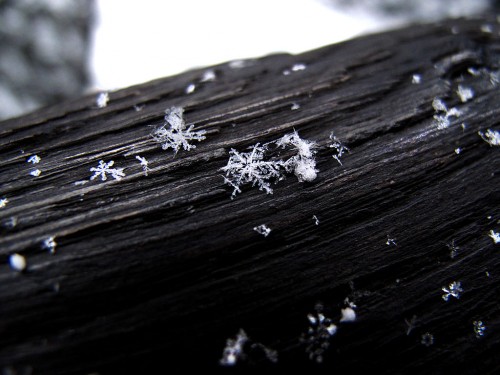Water and snow do not have the same volume because snowflakes have air pockets trapped inside. When snow melts, the air pockets are released to the atmosphere. In addition, water in the solid form has roughly 9% more volume than in the liquid form because of the way the molecules are bonded together via hydrogen bonds. Therefore, when snow melts, the volume of the water is reduced as air molecules are released and hydrogen bonds are broken. In this activity, students investigate the volume relationship between snow and water, which changes depending on the weather conditions at the time of a snow event and the amount of time since the snow event. Students will use many skills learned regarding making measurements of volume to accomplish this activity, and will understand how much liquid water comes from the snow in one particular event.
At the conclusion of this lesson, students will be able to:
- Identify the volume of snow as greater than the volume of ice
- Calculate the volume ratio of snow:water
- Understand that 1 milliliter of water weighs 1 gram
- Understand the properties of snow and liquid water that cause changes in volume
Resource:
Lesson created by Brook Wilke

